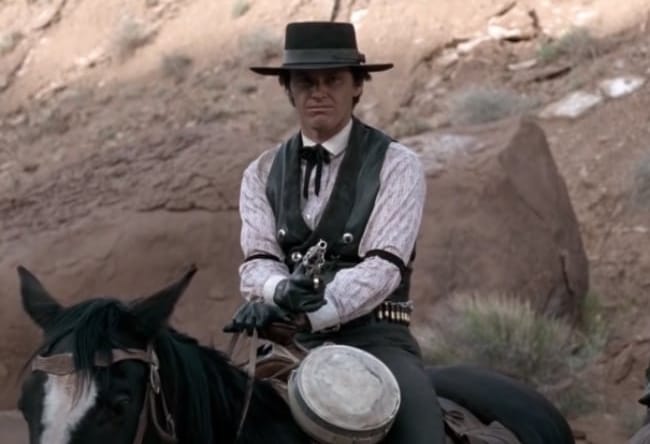
Monte Hellman, a prolific filmmaker known for his contributions to the Acid Western film genre, was planning to attend the first annual Pioneertown International Film Festival before his unexpected death in 2020. To honor his memory, his daughter, actress and producer Melissa Hellman, paid tribute to her father’s legacy at the festival’s opening day on Friday with a back-to-back double screening of two of Hellman’s most well-known films starring Jack Nicholson: The Shooting and Ride in the Whirlwind.
“The Shooting is one of my favorite films of all time, and I’ve watched a lot of movies. I’m a little biased. I used to tell my dad that this is weird, but you’re one of my favorite film directors in the world,” Hellman said. “[This is] the first time that I’m actually introducing my father’s films… he’s always been here for himself, for me. So it’s a little bit emotional.”
Born in Brooklyn, New York, Monte Hellman made a pilgrimage to Los Angeles as a child. Years later, he went on to be mentored by Little Shop of Horrors director Roger Corman, and made Fight to Fury and Back Door to Hell before directing The Shooting and Ride in the Whirlwind, which are considered to be among some of the first Acid Westerns ever made. Both films star Jack Nicholson and Millie Perkins.
Main Image: NFMLA Fights Ageism With Moving Stories of Time Lost and Found
A subgenre under the Western umbrella, the term Acid Western was first coined by film critic Pauline Kael in a review of Alejandro Jodorowski’s El Topo in a 1971 volume of The New Yorker.
Film critic Jonathan Rosenbaum also did a deep dive into the Acid Western genre in his 2000 book Dead Man, which analyzes the 1995 film of the same name by Jim Jarmusch starring Johnny Depp.
“What I partly mean by ‘acid Westerns’ are revisionist Westerns in which American history is reinterpreted to make room for peyote visions and related hallucinogenic experiences, LSD trips in particular,” Rosenbaum wrote in Dead Man. “Both ‘acid Westerns’ and ‘pot Westerns’ depend on reevaluations of white and nonwhite experience that view certain countercultural habits and styles in relation to models derived from Westerns, but where they differ most, perhaps, is in their generational biases, which lead them respectively to overturn or ironically revise the relevant generic norms.”
Hellman isn’t sure whether her father knew he was creating an Acid Western when he made The Shooting or Ride in the Whirlwind, both of which came out in 1966 and were shot at the same time using most of the same actors, sets, and even horses in order to make the most out of a modest budget.
“I don’t think he ever knew what his films were going to do or inspire,” Hellman said. “I know he created the Acid Western and then the road movie [genre], but I don’t think that was ever his intention of doing anything except what he wanted to do.”
“I think that Western came out of the fact that they had to go to a location, they had to make two films for the price of one, Jack [Nicholson] ended up writing that movie on the set before they filmed it,” she added, referring to Ride in the Whirlwind, on which Nicholson served as the screenwriter as well as the star.
“I know that my dad was always working from his unconscious and from his dream states… the fact that it inspired and became a movement is magic.”
Pioneertown International Film Festival founder Julian T. Pinder called The Shooting and Ride in the Whirlwind both “very special films.”
“They changed the genre of the Western and really lifted the careers of Warren Oates and Jack Nicholson,” he said. “They’re very close to our hearts.”
Main Image: Jack Nicholson in The Shooting directed by Monte Hellman
